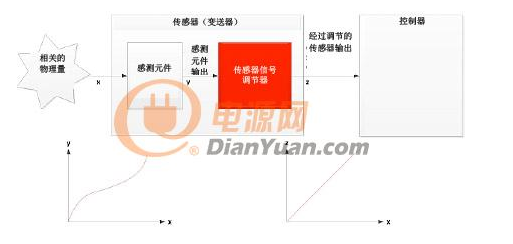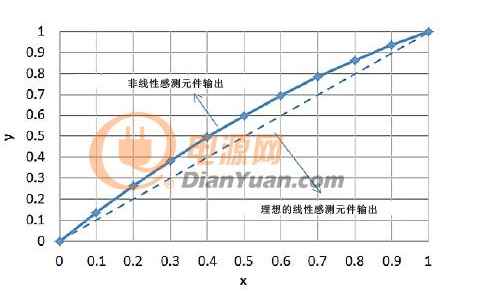The sensing element plays a crucial role in converting physical quantities into electrical signals. For instance, a Wheatstone bridge can be employed to transform pressure into an electrical output. However, many sensing elements exhibit inherent non-linear behavior, meaning their output does not vary proportionally with the physical quantity being measured. Instead, the output changes in a non-linear fashion as the input varies.
To address this non-linearity, a sensor signal conditioner is used. This component helps correct the irregularities in the output of the sensing element, ensuring more accurate and reliable data. In this article, we explore two common techniques for linearizing sensor outputs: 1) look-up tables (LUTs) or interpolation; and 2) polynomial fitting or curve modeling. We will compare these methods and discuss their respective advantages and limitations.
A complete sensor system typically consists of a sensing element and a signal conditioner. The sensing element, such as a Wheatstone bridge or a hot wire anemometer, converts physical parameters like pressure or air mass flow into electrical signals. The signal conditioner then processes these signals, correcting issues like non-linearity, temperature drift, and dynamic response. Figure 1 illustrates the overall structure of the sensor system.

Figure 1: A block diagram showing the relationship between the input physical quantity (x), the sensing element output (y), and the conditioned output (z). The signal conditioner is responsible for improving the quality of the signal by addressing non-ideal characteristics such as non-linearity and temperature effects.
This article focuses on how to handle non-linearity in sensor outputs using signal conditioning techniques. Although various forms of non-linearity exist, we will focus specifically on second-order non-linearity to demonstrate the process of linearization. These principles can be extended to other types of non-linear behavior as well.
If the relationship between the input (x) and output (y) of a sensing element follows the equation shown in Equation 1, it can be classified as having second-order non-linearity:

In this equation:
- a = offset of the sensing element, representing the output when the physical quantity is at its minimum value
- b = span of the sensing element, calculated as the difference between the maximum and minimum outputs
- c = coefficient representing the second-order non-linearity
- x = the measured physical quantity
- y = the output of the sensing element, which depends on x
For example, consider a nonlinear sensing element with the following parameters:
- x ranges from 0 to 1 (normalized, no units)
- a = 0
- b = 1
- c = 10% full scale (FS), where FS = b
With these values, the functional relationship becomes Equation 2. Figure 2 shows the graph of this function for x ranging from 0 to 1. As seen in the figure, when x = 0.5, the output y is 0.6 instead of the expected 0.5 if the system were perfectly linear. This deviation represents a 10% non-linearity at the midpoint, resulting in a bulge in the output curve.

Figure 2: Output of a nonlinear sensing element. Note the bulging shape of the curve, indicating second-order nonlinearity.
The Composite Insulator are made of glassfiber epoxy core rod, silicone rubber shed and metal fittings.
The silicon rubber shed adopt the whole packing pressure technique, can solve the key problem – interface electric spark puncture, which would affect the reliability of composite insulator.
Connection of the glassfiber rod and metal fittings adopts the pressure welding technique of the international advanced level, and have the full automatic sound wave detection of defects system, high intension, beautiful outline, small volume, light weight, and the metal fitting of galvanization can corrosion prevention and exchange used with porcelain insulator.
Composite Insulators,Insulation Resistance,Transmission Lines Insulator,Line Post Type Insulator
Jilin Nengxing Electrical Equipment Co. Ltd. , https://www.nengxingelectric.com